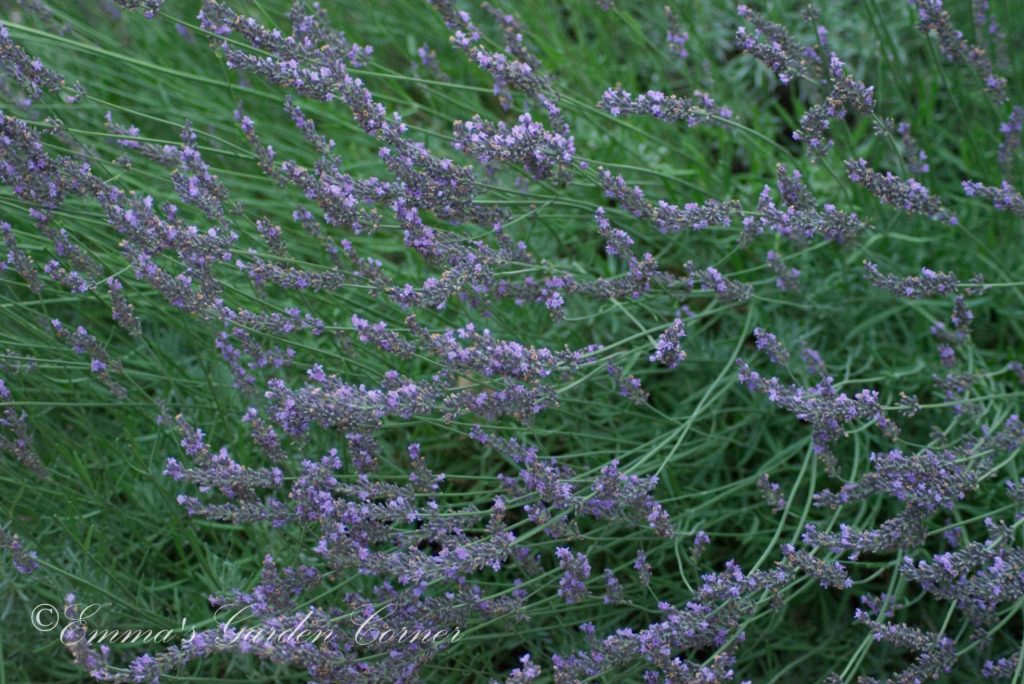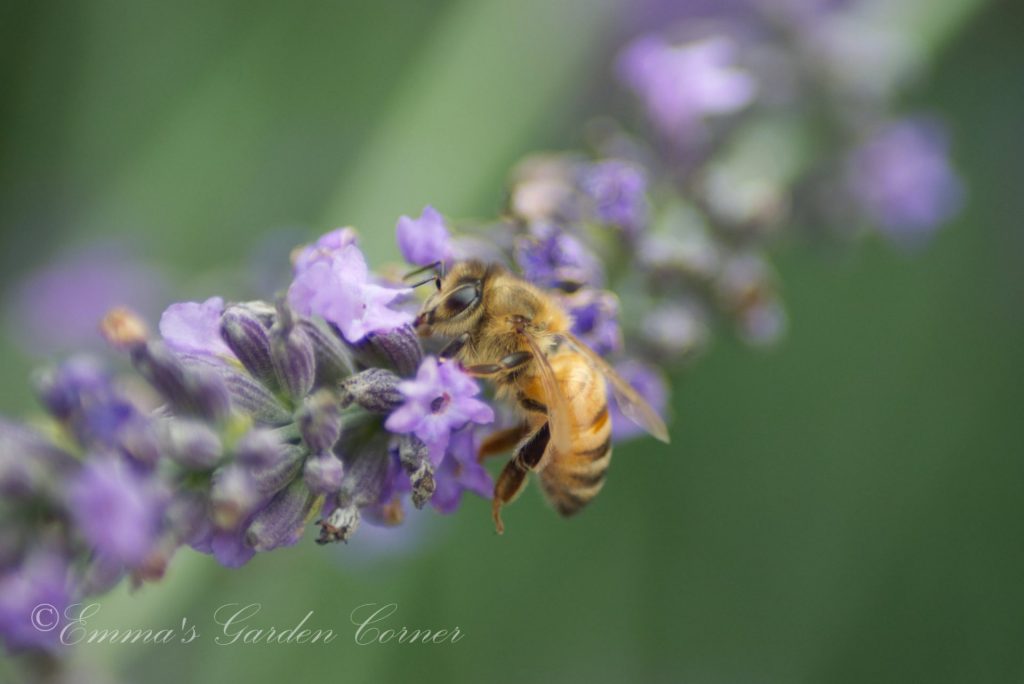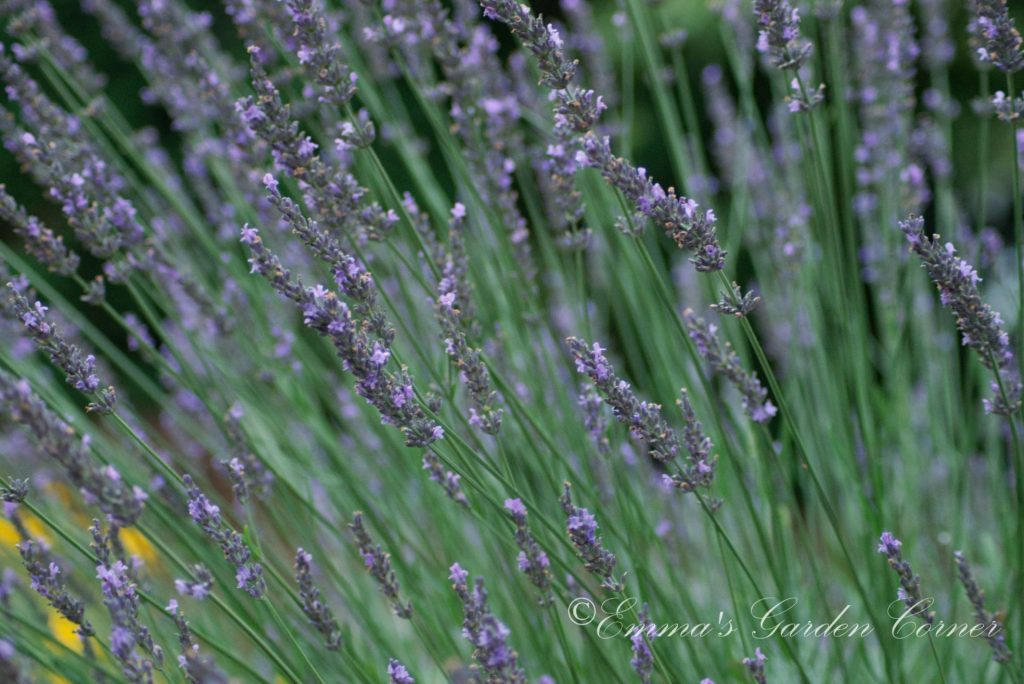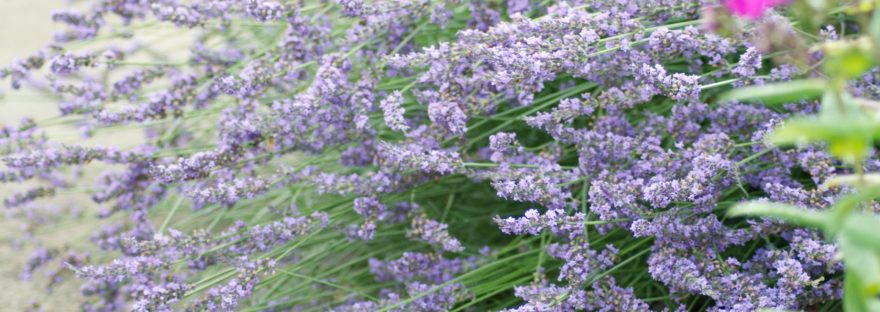Her love was like lavender, delicate and melancholy.
Laura Chouette, The Painting of Mrs. Ravensbrook
Lavender, Lavandula, comes in an array of species. The key is finding the species that works for your USDA growing zone.
One hybrid lavender species, ‘Phenomenal’, is exactly as its name implies. This is a French lavender bush that grows well in harsh conditions. Unlike other lavender species, this is a cold-hardy species that does not die in winter. And it does remarkably well with heat and humidity. This perennial will continue to grow year upon year requiring little care.
It is a great plant for the busy gardener.
Phenomenal lavender growth
The ‘Phenomenal’ lavender typically matures to about three feet tall and wide. However, my ‘Phenomenal’ lavender has grown significantly wider and taller over the years, even with continued trimming.
My lavender was planted when it was a seedling at a few inches tall, and I planted it as a border near the walkway. Over the years, it has steadily expanded as it has matured and drapes over the walkway, causing us to use an alternative route.
Plant your ‘Phenomenal’ lavender at least four feet away from any paths or entryways to avoid blocking the entrance. And allow four to five feet of space around the slow-growing bush when planting other flora in your garden.
Plant in soil with good drainage and in full sun. My soil is clay and, sadly, moldy, but this bush has done well in its present home. The lavender needs full sun to fully flower. Shade will cause the flowers to be weak and small.
This lavender bush needs little watering. During hotter days in the summer if you experience little rain, give your bush a drink now and then. Otherwise, it will do fine.
‘Phenomenal’ lavender grows deep purple flowers from roughly early to mid-summer and they last several weeks. The silvery evergreen plant will continue to produce a mild scent even after the flowers have gone.

Natural pollinator
‘Phenomenal’ lavender attracts honey and bumblebees, as well as butterflies and hummingbirds. The bees are naturally at home on my bush. Each morning I hear the calming sound of buzzing and that hum will last all day. Sometimes I stand in front of it and admire the busy bees going about their activities.
The bush is a perfect plant for photographers’ gardens as the lavender creates photo opportunities with its insect attraction.

Useful lavender
‘Phenomenal’ lavender affords many uses. The easiest use is its cuttings to bring the scent indoors. I will cut several stems and simply place them in vases to dry out, which last through the winter to the next season. You can also place the dry buds in sachets and put them in drawers and closets.
Lavender has a soothing scent and can sometimes help with sleep, so placing lavender near your beside could help you catch those needed z’s.
Other uses include making soaps, shampoos, oils, lotions, and other natural household products, all of which can be found with a search online. Lavender has a wide range of therapeutic and healing properties.
Lavender can be used in food such as shortbread and cakes, syrups and cocktails. However, cooking with lavender can be tricky. Culinary lavender is different from the kind of lavender used for making soaps. ‘Phenomenal’ lavender is heavily scented and from my own cooking experience, is not a variety I would recommend for cooking. The English lavender is what is typically used for culinary lavender, so do your research before using any kind of flower when cooking. For more information on cooking with lavender, check out this article.

‘Phenomenal’ lavender maintenance
For the first few years in my bush’s growth, I did absolutely nothing. It grew substantially before I finally researched how best to care for my now garden feature. For my zone (7a), I wait until the fall, around October to November, when the lavender bush has stopped blooming and has dropped its flowers, before I touch it with clippers.
I trim the stems all the way back to the shortest part of the plant and create an even dome design to the bush. When the flowers grow over the summer, the stems shoot high, as if the flowers are trying to reach the sun. But once the flowers have fallen, they become spiky, empty stems. I cut them all back as if giving them a haircut.
You can also trim your bush in the early spring before it starts to bloom. However, I like to get all my trimming done in the fall before everything goes dormant and give my plantings a chance to get a full rest.
The advantage to trimming your bush is to:
• make it look neat during the winter and
• allow for a cleaner, fuller regrowth in the spring and summer
Another discovery I realized is that if sections look dead, they probably are not. There is a section of the bush I thought was dead because it was no longer silvery green but instead, was dry and grey, but new shoots have popped out of that section, giving it—and me—new hope in its life.
With patience and little maintenance, ‘Phenomenal’ lavender can be an eye-catching feature in your garden. Enjoy its scent, beauty and insect attraction because it will not disappoint!



